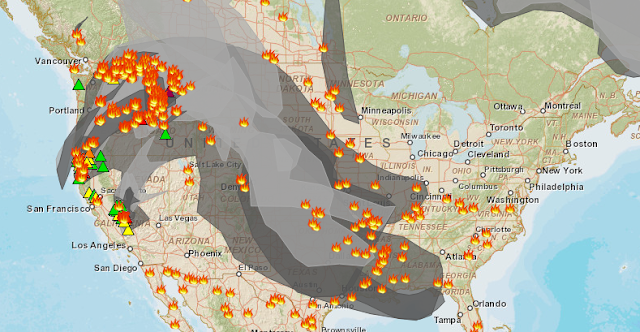I decided to focus on meteor observing through July and August, and actually had some productive sessions over the last few weeks, and filled out some IMO reports online. I may write some "catch-up" entries for this blog about these sessions if time permits. I also had some interesting email correspondence through August that might result in setting up an all-sky camera here at home to image bright meteors and fireballs, and I might elaborate on all of this in the near future.
But my plan after the Perseid Shower and the Kappa Cygnid Shower ended in late August was to go back to Variable Star Observing, and I was ready to do this when this work-week began, in the wee hours before dawn. Unfortunately, several obstacles have prevented me from doing this.
The Moon has been a Waxing Gibbous this week, brightening the sky more and more and setting later and later after midnight. I knew that this would make observing a challenge and give me a narrower "window" of dark sky every morning. But the stars I wanted to observe, in Auriga, Taurus, and Orion, were pretty much in the opposite part of the sky as the Moon, so I thought this was an issue I could get around.
The real problem, however, has been the sky conditions themselves. On Sunday evening, August 23rd, a cold front passed through Indianapolis. The forecast for the next several days called for milder and drier air to move in, with mostly sunny days and clear, cool nights. Unfortunately, the low pressure system that drove the cold front through our area just sat and swirled through the Great Lakes and it kept streaming a "pinwheel" of clouds overhead. These clouds have been persistent!
And even on the mostly clear mornings (Monday and now today), there's been a real "murkiness" to the sky. I thought at first that it might just be the result of high thin cloud cover, but the culprit seems to be high-altitude smoke, just like I saw and wrote about last June. Back then, smoke was drifting into the Midwest from fires in Western Canada. Now it's smoke from wildfires burning in the Continental US. Many of the fires have taken place in the Pacific Northwest, though, as the maps below show, there are also a lot of them in the Great Plains and the Gulf Coast. The Great Plains fires are contributing to the problems I'm seeing overhead.
Map of Wildfires / Smoke Monday morning August 24th
Map of Wildfires / Smoke Tuesday August 25th
This morning the Moon looked yellowed and the sky had a weird blueish tint to it. Stars dimmer than 2.0 magnitude were tough to see. Since Full Moon is two and a half days away, I'm probably not going to be able to observe in dark conditions before dawn for almost two weeks, even if the sky really clears and the smoke goes elsewhere! I think I'll use this time to get my variable star charts in order and write some posts about the targets I plan to take some looks at over the next few months.


